-
 Bitcoin
Bitcoin $102,660.7154
-1.23% -
 Ethereum
Ethereum $2,451.7639
-2.41% -
 Tether USDt
Tether USDt $1.0001
0.01% -
 XRP
XRP $2.4812
3.18% -
 BNB
BNB $647.2827
-1.46% -
 Solana
Solana $169.3555
-3.66% -
 USDC
USDC $1.0000
0.02% -
 Dogecoin
Dogecoin $0.2225
-8.29% -
 Cardano
Cardano $0.7891
-3.75% -
 TRON
TRON $0.2633
-1.06% -
 Sui
Sui $3.9098
-4.83% -
 Chainlink
Chainlink $16.3430
-4.81% -
 Avalanche
Avalanche $24.0044
-4.80% -
 Stellar
Stellar $0.3030
-2.89% -
 Shiba Inu
Shiba Inu $0.0...01514
-8.87% -
 Hedera
Hedera $0.2052
-2.00% -
 Toncoin
Toncoin $3.2528
-6.19% -
 Hyperliquid
Hyperliquid $23.9472
-2.62% -
 UNUS SED LEO
UNUS SED LEO $8.5946
2.61% -
 Bitcoin Cash
Bitcoin Cash $397.4376
-2.96% -
 Polkadot
Polkadot $4.9334
-4.15% -
 Pi
Pi $1.0964
-13.64% -
 Litecoin
Litecoin $102.1441
0.75% -
 Monero
Monero $336.1265
-0.19% -
 Pepe
Pepe $0.0...01311
-8.07% -
 Bitget Token
Bitget Token $4.6765
-3.74% -
 Dai
Dai $1.0000
0.02% -
 Ethena USDe
Ethena USDe $1.0009
0.08% -
 Uniswap
Uniswap $6.6582
-5.63% -
 Bittensor
Bittensor $452.1241
-4.14%
What are the uses of XRP? Introduction to practical application scenarios
XRP facilitates fast, low-cost cross-border payments, provides liquidity, enables micropayments, and supports remittances and asset tokenization, enhancing financial efficiency.
May 12, 2025 at 12:42 am
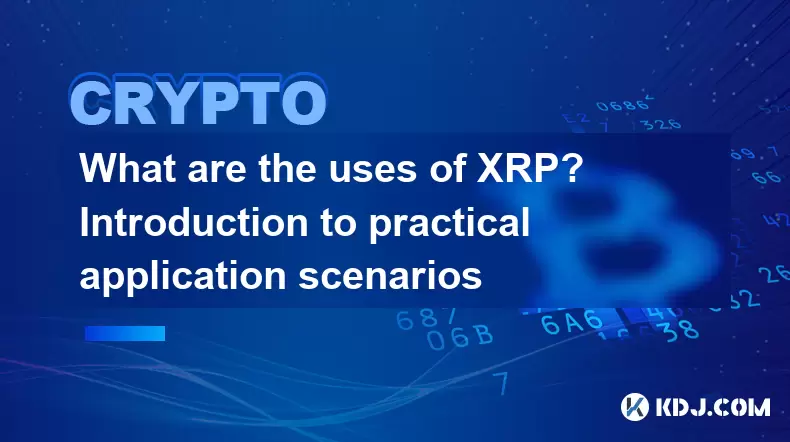
XRP, created by Ripple Labs, is a digital asset designed to facilitate fast and efficient cross-border payments. The primary function of XRP is to serve as a bridge currency, enabling the seamless transfer of value across different currencies and financial systems. This article explores the various practical application scenarios where XRP is used, highlighting its significance in the cryptocurrency ecosystem.
Cross-Border Payments
One of the most prominent uses of XRP is in cross-border payments. Traditional international transfers can be slow, expensive, and cumbersome due to the involvement of multiple intermediaries. XRP addresses these issues by enabling direct transfers between financial institutions.
For instance, banks and financial service providers can use XRP to settle international transactions in seconds, compared to the days it typically takes with traditional methods. This efficiency is achieved because XRP operates on a decentralized ledger, the XRP Ledger, which processes transactions quickly and at a low cost.
In practical terms, when a bank in the United States wants to send money to a bank in Japan, it can convert the USD to XRP, send the XRP to the Japanese bank, and then convert the XRP back to JPY. This process eliminates the need for correspondent banking relationships and reduces the costs associated with currency conversion and transfer fees.
Liquidity Provision
Another significant application of XRP is in providing liquidity. Liquidity is crucial for the smooth functioning of financial markets, especially in the context of international payments. XRP serves as a source of liquidity for financial institutions, allowing them to hold XRP in reserve and use it to facilitate transactions when needed.
For example, a financial institution might use XRP to ensure it has enough liquidity to process payments in different currencies. By holding XRP, the institution can quickly convert it to any currency required for a transaction, thus avoiding the delays and costs associated with traditional liquidity management.
This use of XRP is particularly beneficial for banks and payment providers operating in regions with less developed financial infrastructure, where access to liquidity can be challenging. By leveraging XRP, these institutions can enhance their ability to process international payments efficiently.
Micropayments
XRP is also used for micropayments, which are small financial transactions typically below the threshold of traditional payment systems. The low transaction fees and fast processing times of XRP make it an ideal solution for micropayments.
For instance, content creators and service providers can use XRP to receive small payments for their work or services. This could include paying for access to articles, videos, or other digital content, as well as tipping creators for their work. The use of XRP for micropayments enables a more flexible and efficient payment ecosystem, allowing for the monetization of content and services that were previously not economically viable.
Remittances
Remittances, or the transfer of money by foreign workers to their home countries, is another area where XRP is making an impact. Traditional remittance services often charge high fees and can take several days to process transactions. XRP offers a faster and more cost-effective alternative.
For example, a worker in the United States can use XRP to send money to their family in the Philippines. The transaction can be completed in seconds, with minimal fees, providing a significant improvement over traditional remittance services. This use of XRP not only benefits the sender and recipient but also helps to stimulate economic activity in the recipient's home country.
Tokenization and Asset Transfer
XRP is also used in tokenization and asset transfer. Tokenization involves converting real-world assets into digital tokens that can be traded on blockchain networks. XRP can be used to facilitate the transfer of these tokenized assets, providing a secure and efficient means of moving value.
For instance, a real estate company might tokenize a property and use XRP to transfer ownership of the tokenized asset. This process can be completed quickly and securely, without the need for intermediaries, reducing costs and increasing efficiency.
Similarly, XRP can be used to transfer other types of assets, such as commodities or securities, enabling a more streamlined and cost-effective asset transfer process.
Frequently Asked Questions
Q: Can XRP be used for everyday purchases?
A: While XRP is primarily designed for cross-border payments and liquidity provision, it can technically be used for everyday purchases. However, its adoption for such purposes is limited compared to other cryptocurrencies like Bitcoin or Ethereum, which have more established infrastructure for retail transactions.
Q: Is XRP regulated by any financial authorities?
A: XRP's regulatory status varies by jurisdiction. In some countries, it is treated as a digital asset or commodity, while in others, it may be subject to securities regulations. Ripple Labs has been involved in legal battles with regulatory bodies, such as the U.S. Securities and Exchange Commission (SEC), which has impacted its regulatory status in certain regions.
Q: How does XRP compare to other cryptocurrencies in terms of transaction speed and fees?
A: XRP is known for its fast transaction speeds and low fees. It can process transactions in 3-5 seconds, with fees typically less than a cent. In comparison, Bitcoin transactions can take 10 minutes to an hour and have higher fees, while Ethereum transactions can take around 15 seconds to a minute with varying fees depending on network congestion.
Q: Can individuals hold and trade XRP?
A: Yes, individuals can hold and trade XRP on various cryptocurrency exchanges. Many exchanges support XRP trading pairs, allowing users to buy, sell, and trade XRP with other cryptocurrencies or fiat currencies.
Disclaimer:info@kdj.com
The information provided is not trading advice. kdj.com does not assume any responsibility for any investments made based on the information provided in this article. Cryptocurrencies are highly volatile and it is highly recommended that you invest with caution after thorough research!
If you believe that the content used on this website infringes your copyright, please contact us immediately (info@kdj.com) and we will delete it promptly.
- Bitcoin (BTC) Supply Shock Incoming: Nakamoto Holdings and KindlyMD Merges to Form a $710M BTC Treasury Vehicle
- 2025-05-13 11:55:12
- Shiba Inu (SHIB) Just Hit a 13-Month Low, Yet Whales Spent $10.4 Million Grabbing More, Possibly Betting on a Slow Comeback.
- 2025-05-13 11:55:12
- ICOS & Top Coins of the Week – Hydro, Iceberg, Emmet, Acurast & WIF, PI, PEPE
- 2025-05-13 11:50:12
- Mutuum Finance (MUTM) Presale Frenzy
- 2025-05-13 11:50:12
- Today's edition is brought to you by Bitget - one of the fastest growing centralized exchanges.
- 2025-05-13 11:45:12
- XRP analyst Egrag Crypto has alluded to an analysis in which he revealed his ultimate targets and selling strategy for the altcoin.
- 2025-05-13 11:45:12
Related knowledge
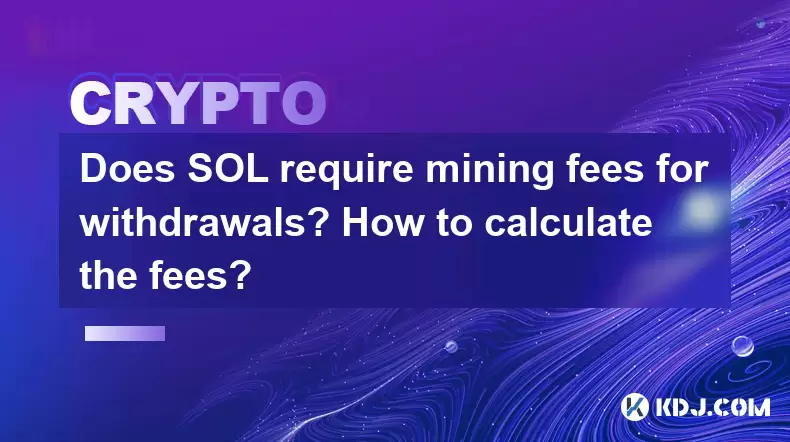
Does SOL require mining fees for withdrawals? How to calculate the fees?
May 13,2025 at 11:15am
Introduction to SOL and Withdrawal FeesSOL, the native cryptocurrency of the Solana blockchain, has gained significant attention in the cryptocurrency community due to its high transaction speeds and low costs. One common question among users is whether SOL requires mining fees for withdrawals and how these fees are calculated. In this article, we will ...
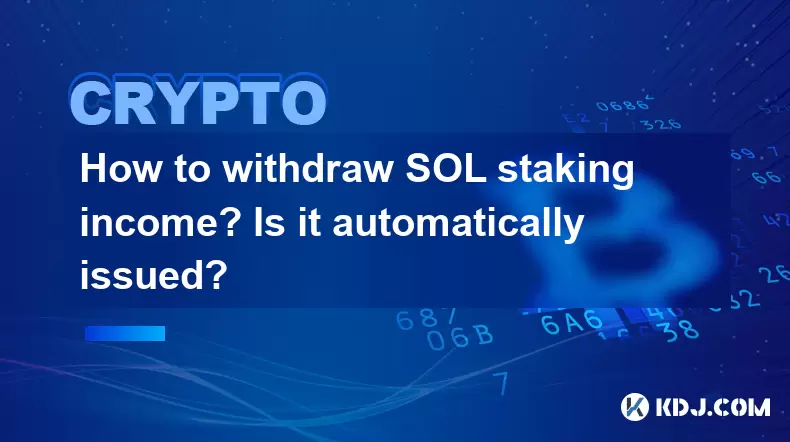
How to withdraw SOL staking income? Is it automatically issued?
May 13,2025 at 10:36am
Introduction to SOL StakingSOL, the native cryptocurrency of the Solana blockchain, can be staked to help secure the network and earn rewards. Staking involves locking up your SOL tokens to participate in the network's consensus mechanism, known as Proof of History (PoH) combined with Proof of Stake (PoS). When you stake SOL, you are essentially delegat...
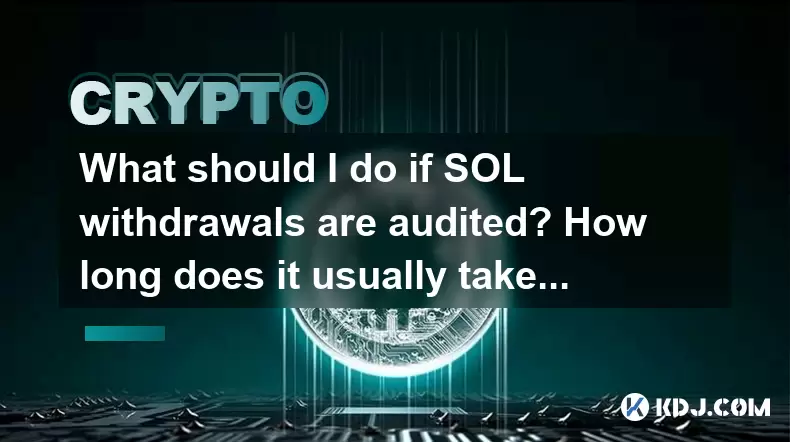
What should I do if SOL withdrawals are audited? How long does it usually take?
May 12,2025 at 10:15pm
If your SOL withdrawals are audited, it's important to understand the process and what steps you need to take. Audits can occur for various reasons, including suspicious activity, high-value transactions, or as part of routine checks by the platform or regulatory bodies. The duration of an audit can vary, but typically it takes between a few days to a f...
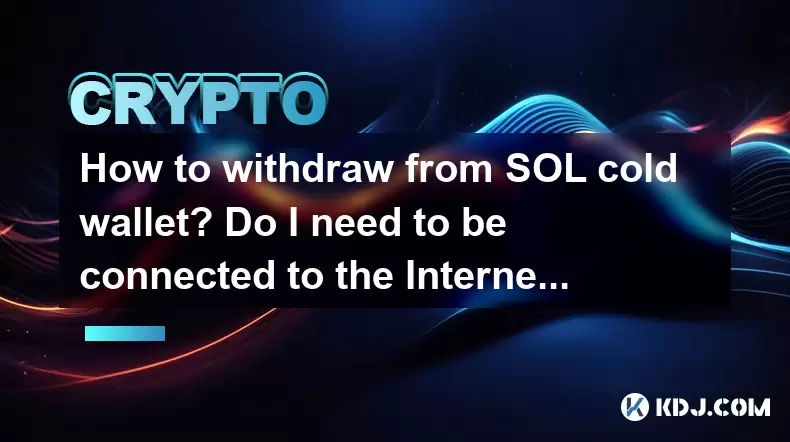
How to withdraw from SOL cold wallet? Do I need to be connected to the Internet?
May 13,2025 at 04:01am
Introduction to SOL Cold Wallet WithdrawalWithdrawing funds from a Solana (SOL) cold wallet involves a few key steps that ensure the security and efficiency of your transactions. A cold wallet, also known as a hardware wallet, is a physical device that stores your private keys offline, providing an extra layer of security against online threats. In this...
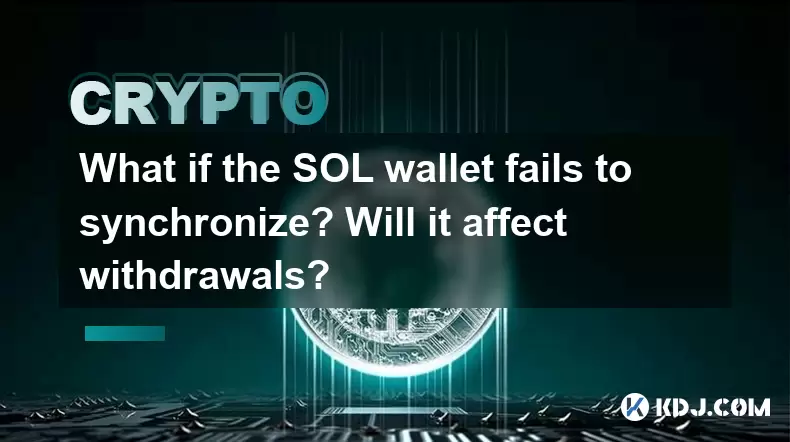
What if the SOL wallet fails to synchronize? Will it affect withdrawals?
May 13,2025 at 05:56am
When dealing with a Solana (SOL) wallet that fails to synchronize, it's crucial to understand the implications and how to address the issue. Synchronization problems can indeed affect your ability to make withdrawals, but there are steps you can take to resolve the situation. Understanding Wallet SynchronizationA SOL wallet needs to synchronize with the...

Is there a limit on SOL withdrawals? How much can be withdrawn per day?
May 13,2025 at 01:29am
Is there a limit on SOL withdrawals? How much can be withdrawn per day? When it comes to managing your Solana (SOL) holdings, understanding the withdrawal limits is crucial for effective planning and transaction management. This article will delve into the specifics of SOL withdrawal limits, focusing on daily withdrawal amounts and the factors that infl...

Does SOL require mining fees for withdrawals? How to calculate the fees?
May 13,2025 at 11:15am
Introduction to SOL and Withdrawal FeesSOL, the native cryptocurrency of the Solana blockchain, has gained significant attention in the cryptocurrency community due to its high transaction speeds and low costs. One common question among users is whether SOL requires mining fees for withdrawals and how these fees are calculated. In this article, we will ...

How to withdraw SOL staking income? Is it automatically issued?
May 13,2025 at 10:36am
Introduction to SOL StakingSOL, the native cryptocurrency of the Solana blockchain, can be staked to help secure the network and earn rewards. Staking involves locking up your SOL tokens to participate in the network's consensus mechanism, known as Proof of History (PoH) combined with Proof of Stake (PoS). When you stake SOL, you are essentially delegat...

What should I do if SOL withdrawals are audited? How long does it usually take?
May 12,2025 at 10:15pm
If your SOL withdrawals are audited, it's important to understand the process and what steps you need to take. Audits can occur for various reasons, including suspicious activity, high-value transactions, or as part of routine checks by the platform or regulatory bodies. The duration of an audit can vary, but typically it takes between a few days to a f...

How to withdraw from SOL cold wallet? Do I need to be connected to the Internet?
May 13,2025 at 04:01am
Introduction to SOL Cold Wallet WithdrawalWithdrawing funds from a Solana (SOL) cold wallet involves a few key steps that ensure the security and efficiency of your transactions. A cold wallet, also known as a hardware wallet, is a physical device that stores your private keys offline, providing an extra layer of security against online threats. In this...

What if the SOL wallet fails to synchronize? Will it affect withdrawals?
May 13,2025 at 05:56am
When dealing with a Solana (SOL) wallet that fails to synchronize, it's crucial to understand the implications and how to address the issue. Synchronization problems can indeed affect your ability to make withdrawals, but there are steps you can take to resolve the situation. Understanding Wallet SynchronizationA SOL wallet needs to synchronize with the...

Is there a limit on SOL withdrawals? How much can be withdrawn per day?
May 13,2025 at 01:29am
Is there a limit on SOL withdrawals? How much can be withdrawn per day? When it comes to managing your Solana (SOL) holdings, understanding the withdrawal limits is crucial for effective planning and transaction management. This article will delve into the specifics of SOL withdrawal limits, focusing on daily withdrawal amounts and the factors that infl...
See all articles






















































































